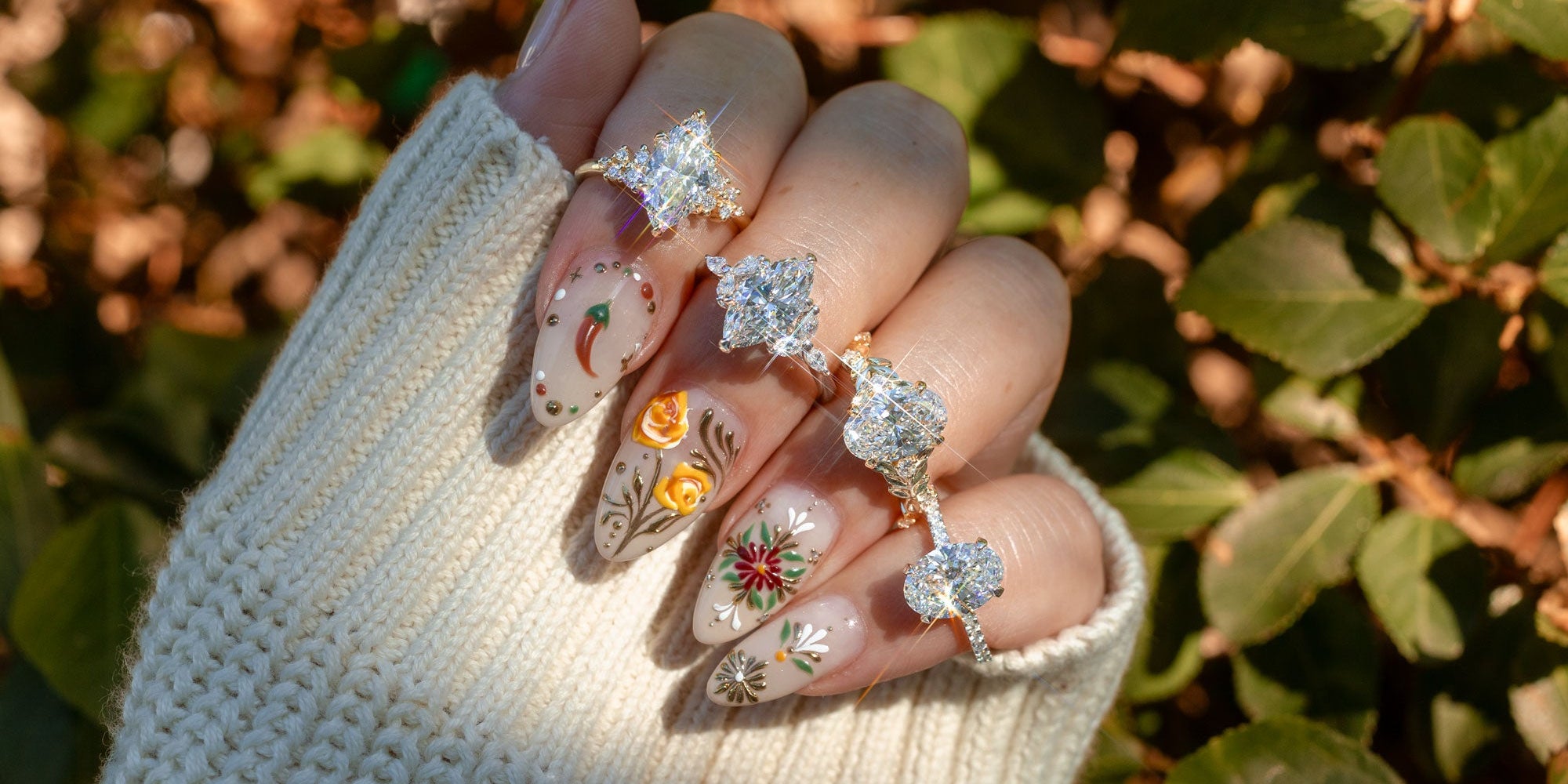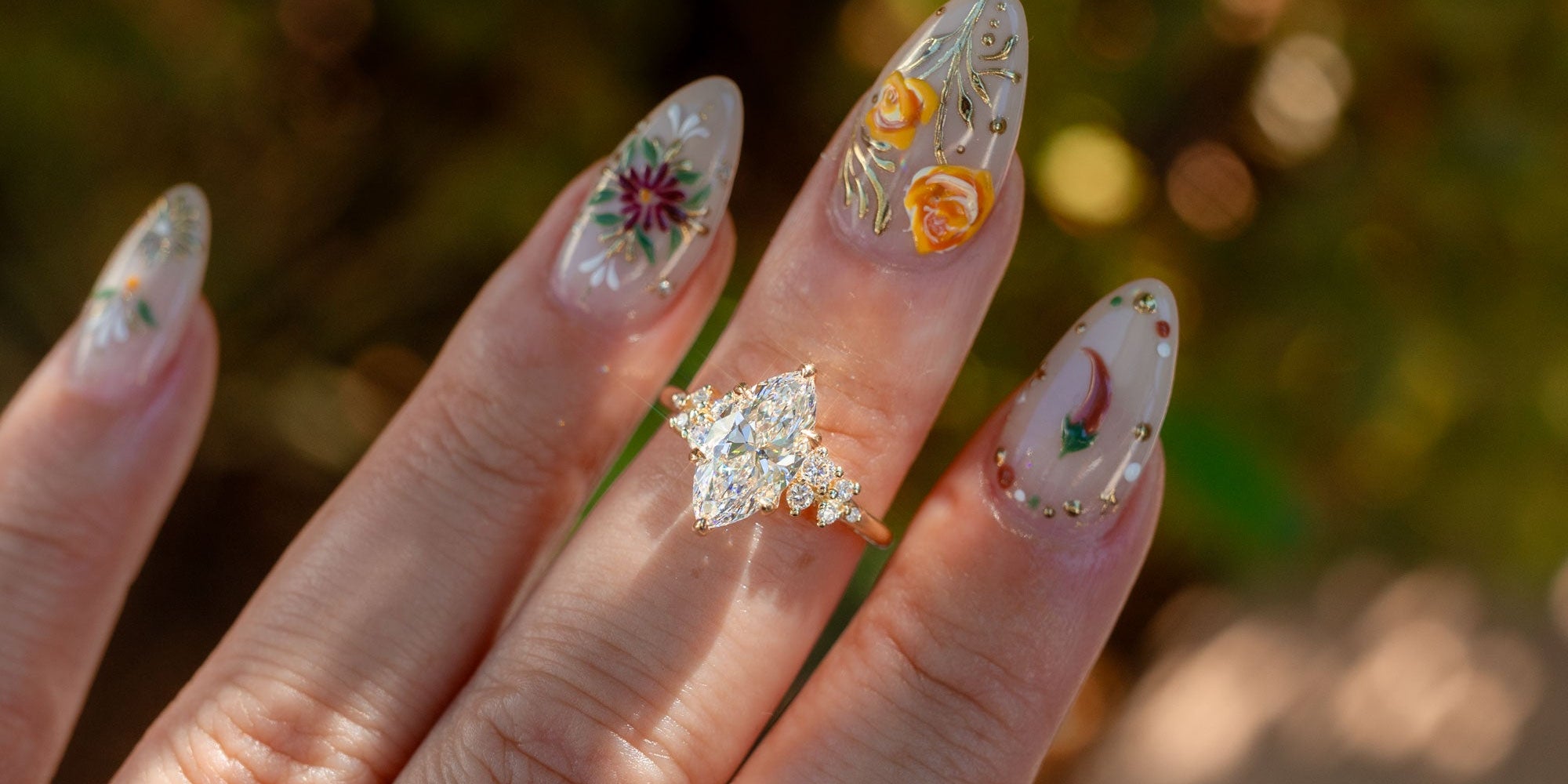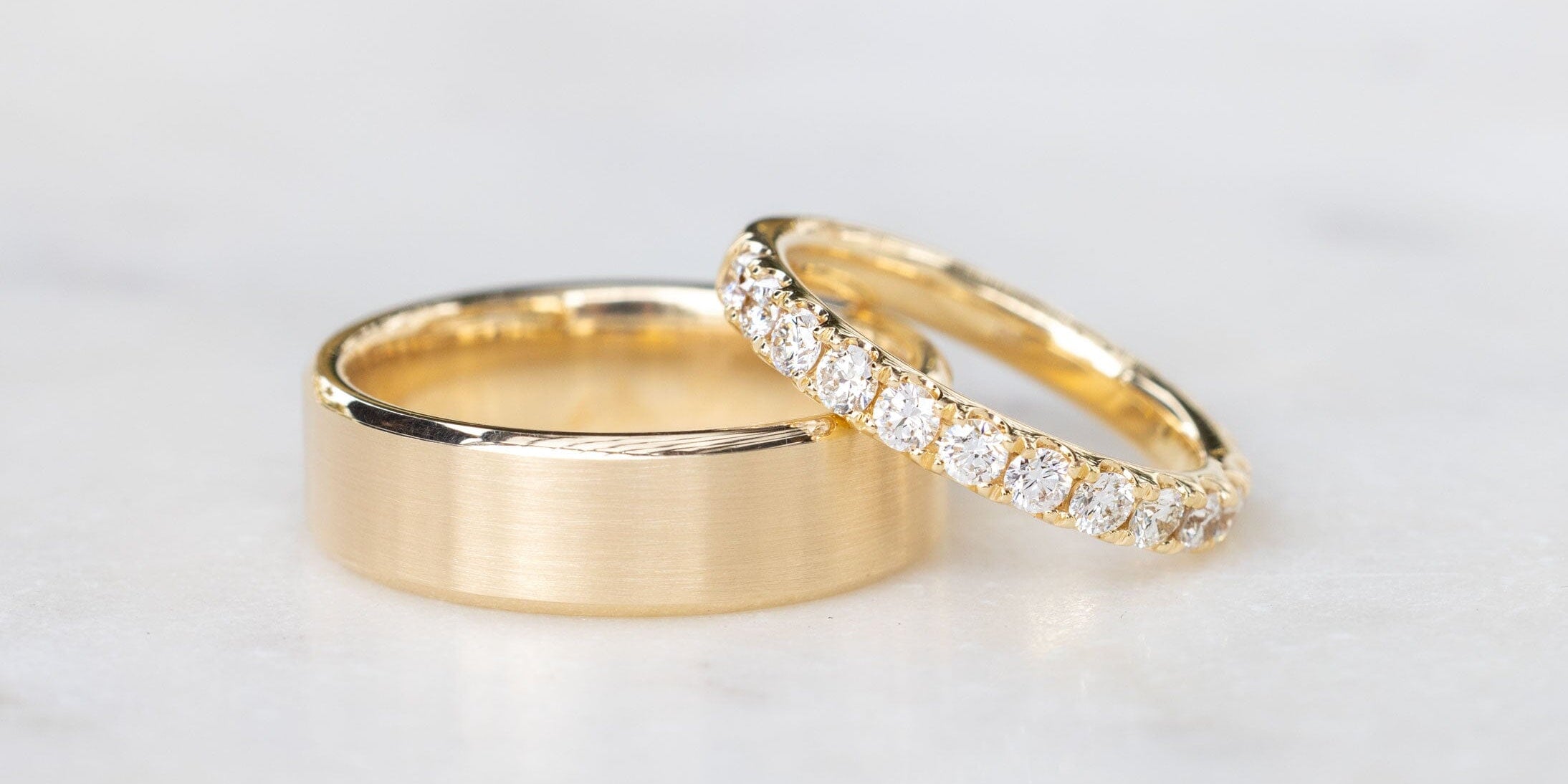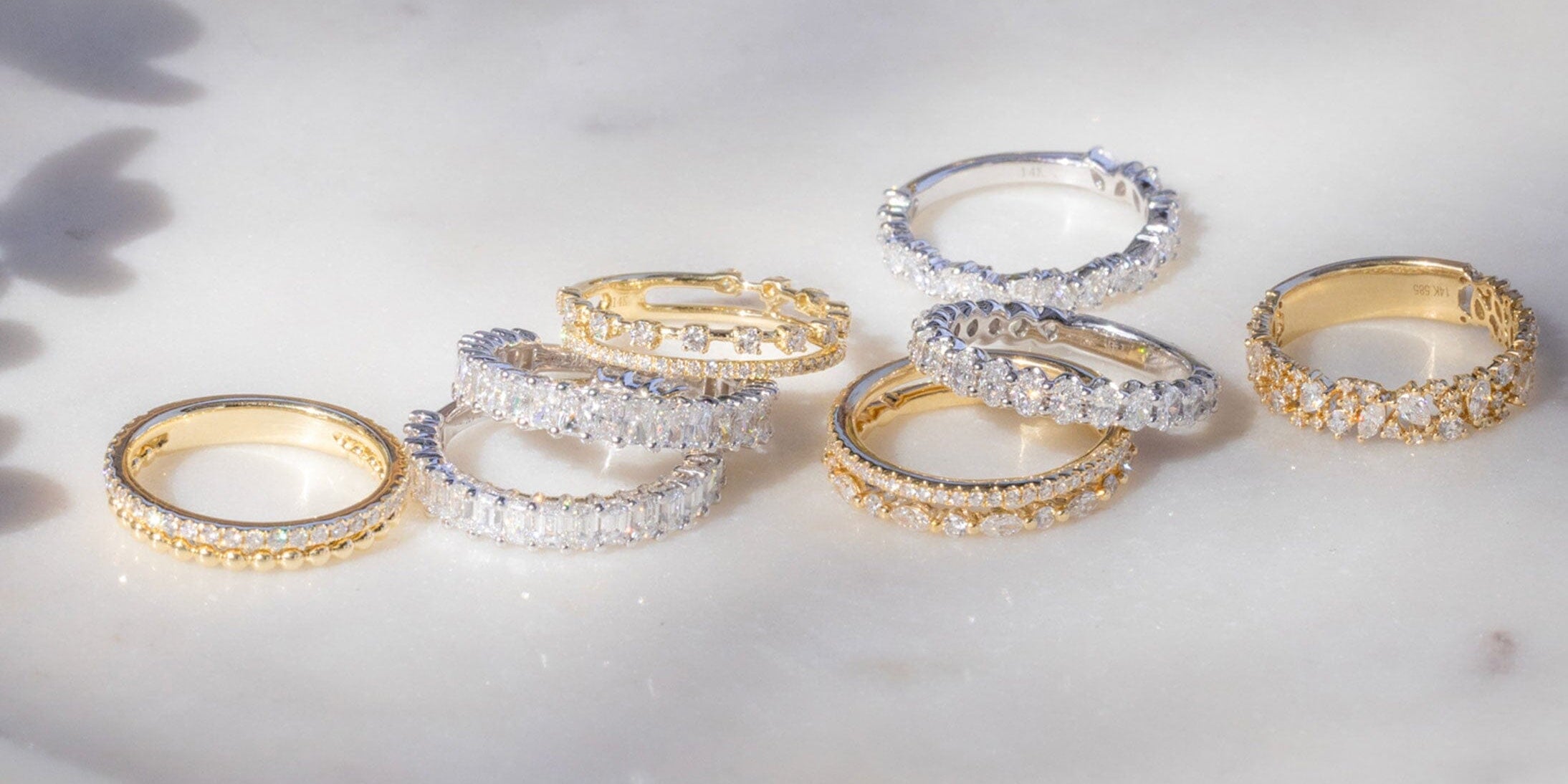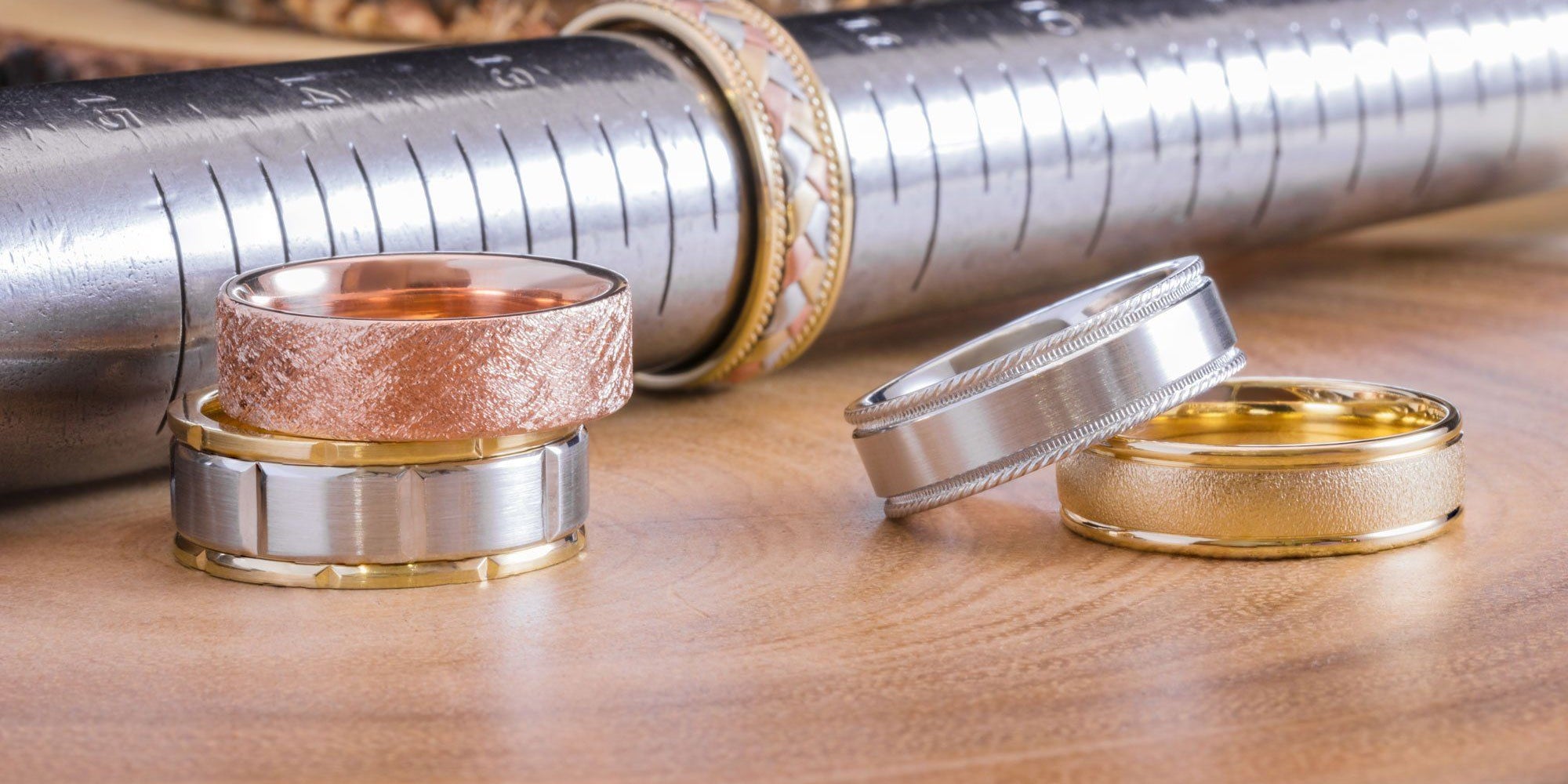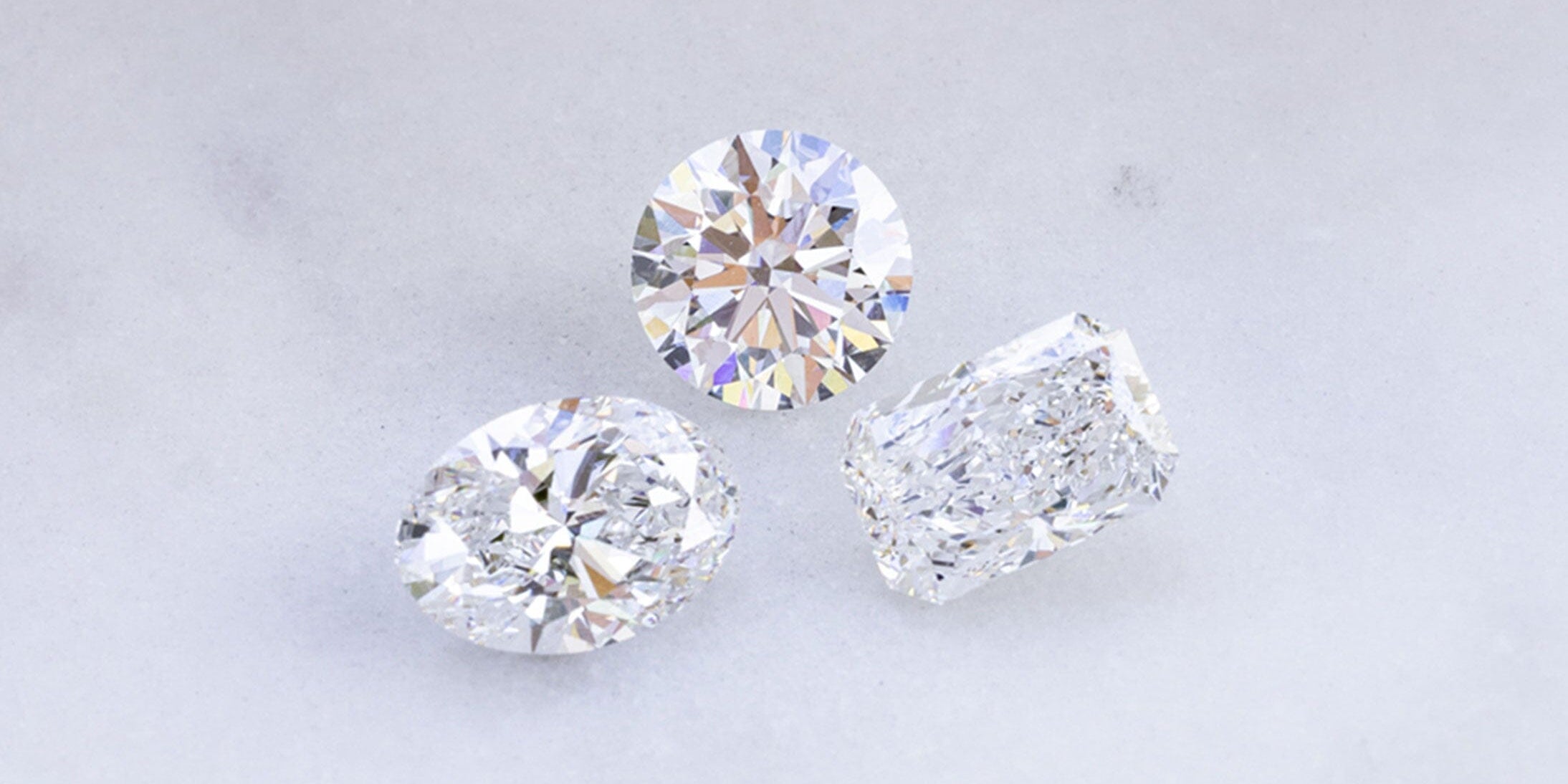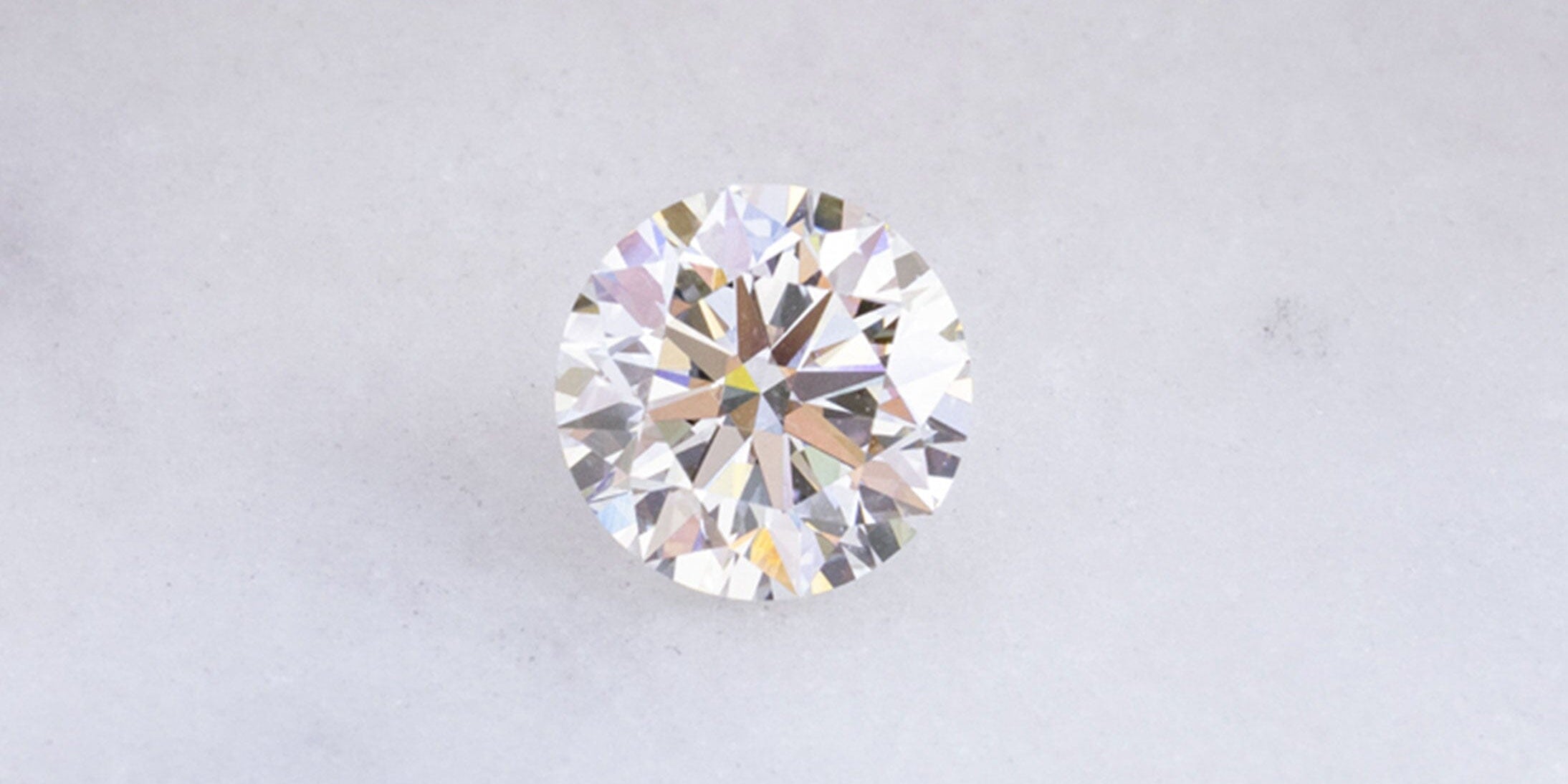Materials
Frequently Asked Questions
-
Yes, we prioritize ethical sourcing practices and ensure that all our diamonds adhere to the Kimberley Process Certification Scheme, guaranteeing that they are conflict-free and ethically sourced from regions known for their diamond production.
-
We source our gemstones from reputable suppliers and ensure that they are genuine and of the highest quality. Additionally, we provide certificates of authenticity for certain gemstones upon request.
-
Natural diamonds are formed deep within the Earth's mantle over millions of years, while lab-grown diamonds are created in controlled laboratory environments using advanced technological processes that replicate natural diamond-forming conditions. Both types offer exceptional brilliance and allure, but lab-grown diamonds have a lower environmental impact as they do not require mining.
-
Yes, we offer customization options to create a unique and personalized engagement ring that reflects your style and preferences. Contact us to discuss your vision, and our expert craftsmen will work with you to bring it to life.
Our Center Stones
-
Our lab-grown diamonds are created in controlled laboratory environments using advanced technological processes that replicate the natural diamond-forming conditions found deep within the Earth's mantle. Sourced from leading laboratories with a commitment to sustainability and innovation, our lab-grown diamonds offer the same brilliance and allure as natural diamonds without the environmental impact of mining.
-
Our moissanite gemstones are lab-created from silicon carbide, sourced from trusted manufacturers with a reputation for quality and innovation in gemstone production. Ethical and sustainable, our moissanite gemstones offer exceptional brilliance and durability at a fraction of the cost of traditional diamonds, making them an excellent choice for environmentally-conscious couples.
-
Renowned for their exceptional brilliance and beauty, our natural diamonds are sourced from reputable suppliers committed to ethical and responsible mining practices. We prioritize diamonds that adhere to the Kimberley Process Certification Scheme, ensuring that they are conflict-free and ethically sourced from regions known for their diamond production.
-
Symbolizing loyalty, trust, and wisdom, sapphire is a captivating gemstone prized for its vivid blue hue, although it's available in a spectrum of colors, including pink, yellow, and green. Our sapphires are ethically sourced from regions such as Sri Lanka, Madagascar, and Myanmar, known for their rich deposits of high-quality sapphires.
-
Representing passion, love, and courage, ruby is a vibrant gemstone prized for its rich red color and exceptional beauty. Our rubies are sourced from regions such as Myanmar, Mozambique, and Thailand, renowned for their high-quality rubies with intense color saturation and clarity.
-
Radiating warmth and femininity, morganite is a delicate pink gemstone known for its soft, peachy hue and subtle sparkle. Our morganite gemstones are sourced from regions such as Brazil, Madagascar, and Afghanistan, known for their deposits of high-quality morganite with excellent clarity and color.
-
Moonstone is a captivating gemstone known for its ethereal glow and mystical allure. Sourced from regions known for their high-quality moonstone deposits, such as India, Sri Lanka, Madagascar, and Myanmar, our moonstones exhibit a mesmerizing play of light and iridescence. With their serene beauty and delicate hues, moonstone engagement rings offer a unique and enchanting option for couples seeking a symbol of love and magic.
Durability and Wearability of Metal Types
-
14K White: 59-59.5% pure gold +alloy (15% silver + 39-41% copper + 14-16% zinc +30% nickel)
- Durability: 14K white gold offers good durability for everyday wear, but it may require rhodium plating periodically to maintain its bright white appearance.
- Wearability: Suitable for most jewelry designs, 14K white gold is a popular choice for engagement rings and wedding bands due to its elegant appearance and affordability.
-
14K Yellow: 59-59.5% pure gold +alloy (27.5% silver + 56-58% copper +15-17% zinc)
- Durability: 14K yellow gold is durable and resistant to tarnish, making it a practical choice for everyday wear.
- Wearability: Ideal for traditional and classic jewelry styles, 14K yellow gold exudes warmth and timeless elegance, perfect for engagement rings and heirloom pieces.
-
14K Rose: 59-59.5% pure gold +alloy (20.2% silver +77-79% copper +1-3% zinc)
- Durability: 14K rose gold offers good durability and resistance to scratching, making it suitable for daily wear.
- Wearability: Known for its romantic hue, 14K rose gold adds a touch of warmth and femininity to any jewelry design, making it a popular choice for engagement rings and fashion-forward pieces.
-
18K White: 75.5-76% pure gold +alloy (15% silver + 39-41% copper + 14-16% zinc +30% nickel)
- Durability: 18K white gold offers excellent durability and resistance to wear, but like 14K white gold, it may require periodic rhodium plating to maintain its bright white finish.
- Wearability: With its higher gold content, 18K white gold is luxurious and durable.
-
18K Yellow: 75.5-76% pure gold+alloy (27.5% silver + 56-58% copper +15-17% zinc)
- Durability: 18K yellow gold offers excellent durability and resistance to tarnish, making it well-suited for everyday wear.
- Wearability: Radiating warmth and elegance, 18K yellow gold is a classic choice for engagement rings and fine jewelry, perfect for those seeking a timeless and sophisticated look.
-
18K Rose: 75.5-76% pure gold +alloy (20.2% silver +77-79% copper +1-3% zinc)
- Durability: 18K rose gold offers excellent durability and resistance to scratching, making it suitable for daily wear.
- Wearability: With its romantic and feminine hue, 18K rose gold adds a touch of warmth and charm to any jewelry design, making it a popular choice for engagement rings and statement pieces.
-
PT950: 95% Platinum + 5% alloy (palladium, ruthenium, cobalt)
- Durability: Platinum PT950 is prized for its exceptional durability and strength, making it highly resistant to wear, corrosion, and tarnish.
- Wearability: Hypoallergenic and naturally white, platinum PT950 is perfect for those with sensitive skin and offers a luxurious and timeless appeal. Ideal for engagement rings and heirloom-quality jewelry.
Vickers Hardness Scale
The Vickers hardness scale is typically used to measure the hardness of materials, including metals. However, it's not commonly used for gemstones like diamond and moissanite, which are typically measured on the Mohs scale. Here's an approximation of the Vickers hardness for the metal types:
- Diamond: Vickers hardness typically around 8000-10000 HV
- Moissanite: Vickers hardness typically around 2200-2400 HV
- Platinum PT950: Vickers hardness typically around 40-50 HV
- 14K White Gold: Vickers hardness typically around 120-180 HV
- 14K Yellow Gold: Vickers hardness typically around 120-180 HV
- 14K Rose Gold: Vickers hardness typically around 120-180 HV
- 18K White Gold: Vickers hardness typically around 120-180 HV
- 18K Yellow Gold: Vickers hardness typically around 120-180 HV
- 18K Rose Gold: Vickers hardness typically around 120-180 HV
It's worth noting that while hardness is an indicator of a metal's resistance to scratching, it doesn't necessarily equate to its toughness or resistance to breakage. For example, while some metals might be soft and scratch easily, they could be very malleable and less likely to break or crack compared to harder metals.
For those investing in jewelry, considering both the hardness and overall durability of the chosen metal is crucial, especially for pieces expected to experience daily wear, like wedding bands or engagement rings.

